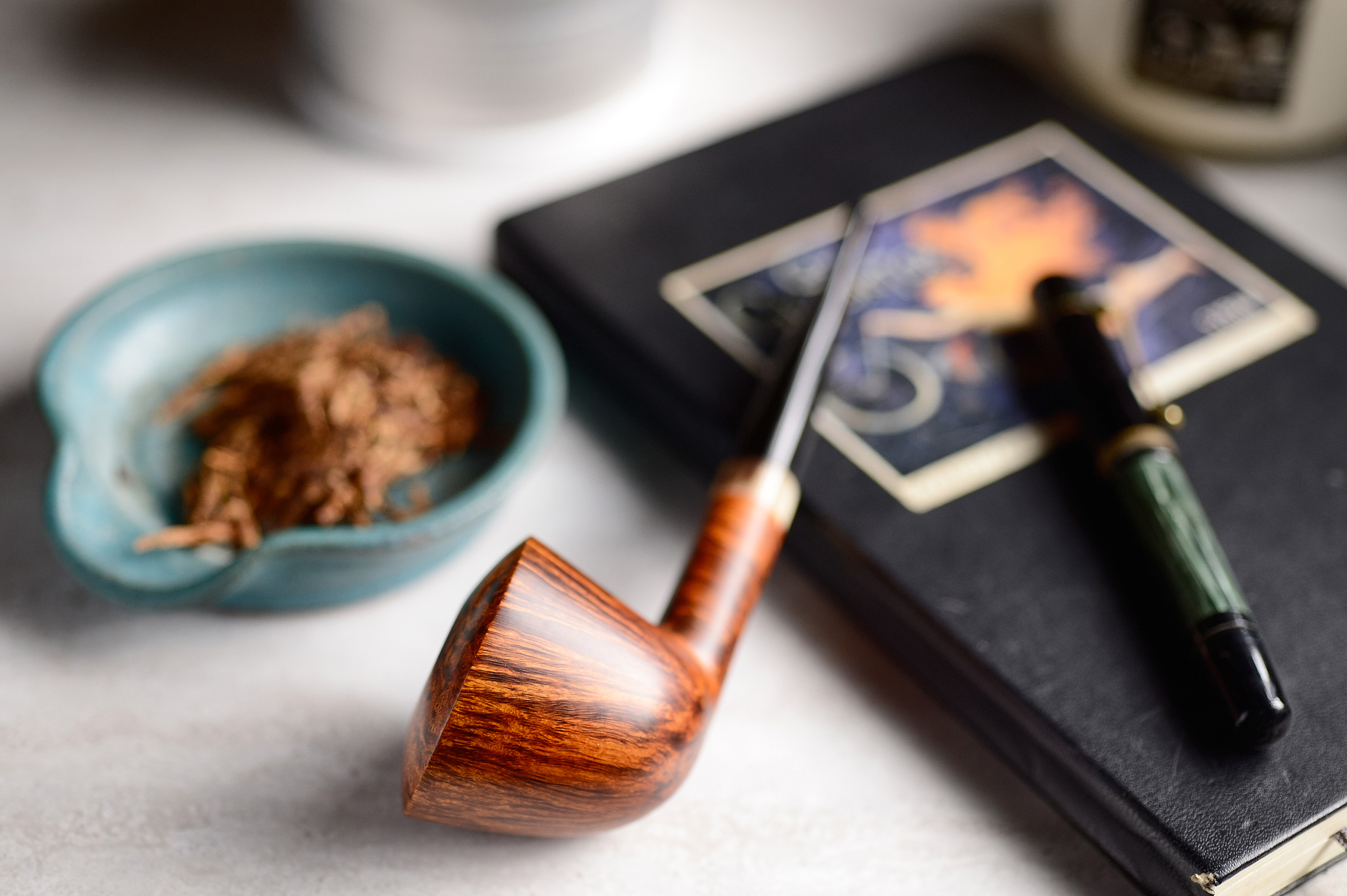
Something has been rattling around in my noggin for years, the result of many late night conversations with a lot of folks in a lot of fields, like chefs, winemakers, coffee roasters, and especially other dedicated pipe enthusiasts. It seems like we’ve all got stories about how our palates have developed over time and with continued experience. For many of us, it’s not just that our tastes have changed through the years, but our perceived ability to taste has also evolved. While often this results in a deeper appreciation of our favored blends or styles of tobacco, other times it can result in a complete change in our preferences; we may find ourselves not liking something we’ve previously enjoyed, or craving things we never thought we liked.
When I was fairly new to the pipe, I didn’t have much interest beyond fairly rich Latakia mixtures. I’d tried many different “aromatics,” and none of them did much for me. Though I could appreciate the way they smelled in the jar or in the room, their taste rarely delivered what their aromas promised. Similarly, I didn’t find much pleasure in Virginia blends, their flavors being more muted and too subtle to hold my interest. Even when I did smoke them, I’d nearly always follow up with a bowl of the smoky stuff to scratch that familiar itch.
I tended to gravitate towards those bold, assertive flavors largely because my palate hadn’t yet developed a full appreciation of the nuances of subtler tobaccos. Plus, I just loved the way they smelled. Many have shared similar stories about their own early steps along the journey, though for some it’s been sort of the opposite; Latakia was too overwhelming to their taster, and they started out preferring more gentle fare. In retrospect, this makes sense to me. Being a bit hyperosmic, I craved tobaccos that provided a taste experience that lived up to the expectations established by their intense aromas.
Things are rather different for me now. Though I still crave my long beloved, rich, heavy Latakia mixtures, I’ve learned to deeply appreciate and enjoy a much broader range of tobacco styles. What changed?
In honesty, a lot of this is just the natural result of doing what I’ve been doing for a living over the last 25 years. Spending so much time focused acutely on tobacco cannot help but change one’s relationship to it. Concentrating on the minute differences between two batches of some variety, or how a tiny change in the percentage of one leaf over another can influence a blend makes my brain jump through different hoops now than it did when I started out.
It’s the same for any of us who zoom our attention in on what we do. We all start out with pretty much the same basic sensory apparatus, but as we concentrate on what we’re tasting, over time our brains adapt to have both greater resolution, and to more quickly identify less obvious nuances.
Think of it as building a sort of multi-dimensional network of neural connections, each of our experiences forming a set of individual nodes. The more attention we pay to those experiences, the more complex and densely interconnected the network becomes. We gradually become better able to associate different aspects of the subtle sensory inputs with one another, and the richer the experience becomes. Some of this happens naturally, of course, but the more consciously we focus, the faster we “learn” to appreciate novel subtleties, and the quicker these connections are traversed, allowing us to more easily distinguish one taste from another. That’s pretty much what’s happened inside my own gulliver over the last 25 years of blending, and the process continues to this day.
I’m often asked how one can learn to identify and even put a name to all the flavors that different leaf and different blends can present. My advice has always been the same: Focus and take notes. Read reviews to see what others detect, and try to pick those flavors or aromas out. Your experience might be completely different, but their impressions can still be useful. The more information we have, and the more attention we put on our own experience, the more we’ll begin suss out those elusive tastes. To some, this seems like too much effort, too much like work, and that’s a fair cop. As I said, some of this just happens naturally, and there’s nothing at all wrong with just enjoying the natural evolution of our palates over time.
But others may want to accelerate this process, or take it to a deeper level, and that’s where the note taking comes into play. By thinking about what we’re smoking, engaging our analytical machinery and putting our sensorial experiences into words, our attention gradually shifts to the more subtle notes we perceive, associating them in their sensory proximity to past experiences, even those unrelated to tobacco, In doing so, we build our own network in a more conscious fashion, and soon begin detecting things we’d never noticed before as our sensory landscape takes on more dimension, adding another aspect to the pleasures of the pipe.
The pipe can be a pleasant distraction from a world which is too often complex and over-stimulating. But, as an almost meditative practice, puffing in a more mindful way, focusing attention on the array of pleasures that our seemingly simple pastime offers, keeping a few simple notes, we can take our enjoyment to another level. I certainly recommend it, at least occasionally, but only if you find it fun.















